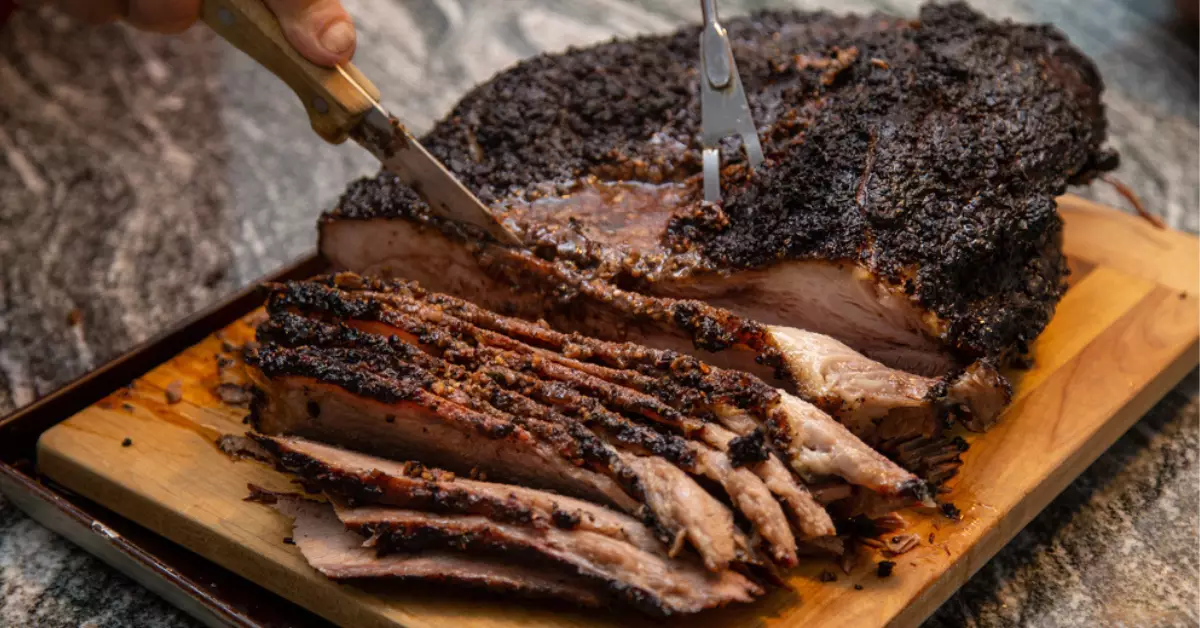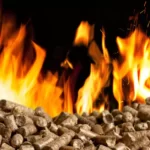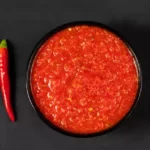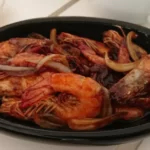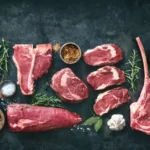Brisket is a delicacy celebrated worldwide, particularly in culinary traditions that value slow, patient cooking. Known for its rich flavor and tender, pull-apart texture, brisket is a favorite choice for many meat lovers. It’s a cut of meat taken from the lower chest or breast of beef or veal, boasting a heavy concentration of connective tissues.
Overcooking a brisket can indeed become a pitfall for home cooks and professionals alike. Brisket requires a precise balance of heat, timing, and moisture to reach its optimal state. Overcooking it can lead to a dry, tough result that robs the meat of its famous juicy tenderness.
The key to avoiding overcooked brisket lies in understanding the process of cooking this cut of meat. Knowledge about the right cooking methods, signs of overcooking, preventive measures, and possible solutions can equip any cook with the confidence to handle brisket.
Ideal Cooking Methods for Brisket
Slow-Cooking: A Preferred Method
Brisket’s nature demands slow cooking at low temperatures. This method allows the heat to penetrate deep into the meat, breaking down the tough connective tissues over time. Consequently, this yields a tender, juicy result. Using a slow cooker or an oven set at a low temperature for several hours is an ideal method for achieving perfect brisket.
Smoking Brisket: A Barbecue Favorite
Smoking is another favorite method for brisket. The process involves cooking the meat over low, indirect heat from burning wood. This slow, steady technique imparts a smoky flavor that pairs exceptionally well with the natural tastes of brisket.
What Happens When Brisket is Overcooked
Overcooking a brisket has implications that impact the overall dining experience. A brisket that has been subjected to excessive heat for too long undergoes various unfavorable changes.
Impact on Texture
The beauty of a well-cooked brisket lies in its tender, almost melt-in-your-mouth texture. This succulence is the result of the gradual breakdown of connective tissues in the slow-cooking process. However, overcooking pushes this breakdown too far.
- Dryness: Overcooking causes excessive moisture loss. The brisket loses its juices, leading to a dry, hard bite instead of a moist, soft one.
- Toughness: When the meat’s protein fibers contract too much due to excessive heat, it results in a tough, rubbery texture. It might become so hardened that it’s difficult to chew.
- Shrinkage: Overcooked brisket tends to shrink more due to the high degree of moisture and fat loss. You might end up with a much smaller piece of meat than you started with.
Effects on Flavor
Overcooking doesn’t just affect the texture of the brisket—it also alters its flavor profile.
- Loss of Natural Flavors: Overcooked brisket loses the deep, rich, beefy flavor it’s known for. The prolonged exposure to heat degrades the meat’s natural flavor compounds.
- Burnt or Bitter Taste: Overcooking, especially at high temperatures, can cause the exterior of the brisket to burn, leading to a bitter taste. This burnt taste can permeate the whole piece, ruining its flavor.
- Loss of Smoke Ring: For smoked brisket, overcooking might lead to the loss of the prized “smoke ring”— the pink layer beneath the crust that signals a well-smoked meat. The ring is an indicator of a flavorful brisket, and its absence might mean a less smoky flavor.
Nutritional Implications
Nutritionally, overcooking a brisket can lead to a decrease in certain nutrients, altering its dietary benefits.
- Vitamin Degradation: Prolonged cooking leads to the degradation of some heat-sensitive vitamins, such as those in the B-vitamin group. This might reduce the nutritional value of the brisket.
- Protein Denaturation: Overcooking can result in the denaturation of proteins, changing their natural structure. While this doesn’t significantly impact the nutritional value, it does affect the digestibility and texture of the protein.
Identifying an Overcooked Brisket
When it comes to determining whether your brisket has been overcooked, several signs can provide clues.
Visual Indicators
Assessing the visual appearance of your brisket can help you ascertain if it’s been overcooked.
- Color: A well-cooked brisket should have a rich, dark brown exterior and a pinkish-red interior. If your brisket has a pale, grey, or dull color, it might be overcooked.
- Size: Overcooked brisket tends to shrink more than properly cooked brisket due to excessive moisture loss. If your brisket appears significantly smaller than its raw size, it might be overcooked.
- Surface: A dry, hard, or burnt surface is another indicator of overcooking. The surface might also lack the glossy sheen that a juicy brisket usually has.
Taste and Texture Clues
The taste and texture of the brisket provide vital cues to its level of cooking.
- Flavor: If the deep, rich, beefy flavor is missing, or if there’s a burnt or bitter taste, the brisket might be overcooked.
- Texture: Overcooked brisket tends to be tough, chewy, and dry. Instead of the expected tenderness, it’s hard and difficult to pull apart.
- Moisture: A juicy, well-cooked brisket will release some of its juices when cut. If your brisket is dry and doesn’t release any juices, it’s likely overcooked.
Common Mistakes Leading to Overcooked Brisket
Inadequate Temperature Control
Maintaining a steady, low temperature is crucial. Fluctuating or excessively high temperatures can lead to overcooking.
Neglecting the Importance of Marinating
Marinades add flavor and help tenderize the meat. Ignoring this step can result in a tougher texture.
Misunderstanding the Cooking Time
Due to its size and composition, brisket takes time to cook properly. Rushing the process or overstaying the cooking period can result in overcooked brisket.
How to Rescue an Overcooked Brisket
Techniques to Moisturize Dry Brisket
Slice the meat and simmer it in a rich sauce or broth. This can rehydrate the meat, restoring some of its lost moisture.
Creating Sauces to Mask Overcooked Flavors
A tangy barbecue sauce or rich gravy can help mask the dull flavor of overcooked brisket.
Using Overcooked Brisket in Other Dishes
Consider using overcooked brisket in dishes like stews, casseroles, or chilies. These recipes can help make the most out of an otherwise disappointing brisket.
Preventive Measures Against Overcooking Brisket
Proper Use of Meat Thermometers
A reliable meat thermometer is a cook’s best friend. It ensures the internal temperature of the brisket is just right, preventing overcooking.
Understanding the “Stall” in Brisket Cooking
During smoking or slow-cooking, brisket experiences a “stall” when the internal temperature plateaus. Recognizing this phase can help you maintain patience and avoid overcooking.
Importance of Resting Time
Resting allows the meat to finish cooking gently with residual heat and reabsorb its juices. Ignoring this step can lead to a drier, overcooked brisket.
Frequently Asked Questions
What is the optimal internal temperature for brisket?
The optimal internal temperature for a tender, juicy brisket is between 195°F to 205°F. Always use a meat thermometer to accurately determine the temperature.
Can you eat overcooked brisket?
Yes, overcooked brisket can be eaten, although it may lack the juicy tenderness and rich flavor of properly cooked brisket.
How long should brisket rest after cooking?
It’s recommended to rest brisket for at least 30 minutes to 1 hour after cooking. This allows the meat to reabsorb its juices, leading to a moister result.
Conclusion
Brisket, with its rich flavor and tender texture, truly rewards the patient cook. The balance of under and overcooking lies in careful temperature control, understanding the meat’s nature, and following appropriate cooking methods.
Mistakes do occur, and an overcooked brisket isn’t a culinary dead end. Various techniques can help salvage the situation. Yet, prevention remains the best strategy, ensuring that the brisket reaches its full potential on your dining table.
In the end, cooking brisket is a delightful art. It tests your patience, yet the result — a juicy, flavorful piece of meat — is well worth the wait. A well-cooked brisket showcases not only the meat’s qualities but also the cook’s skills and dedication.

